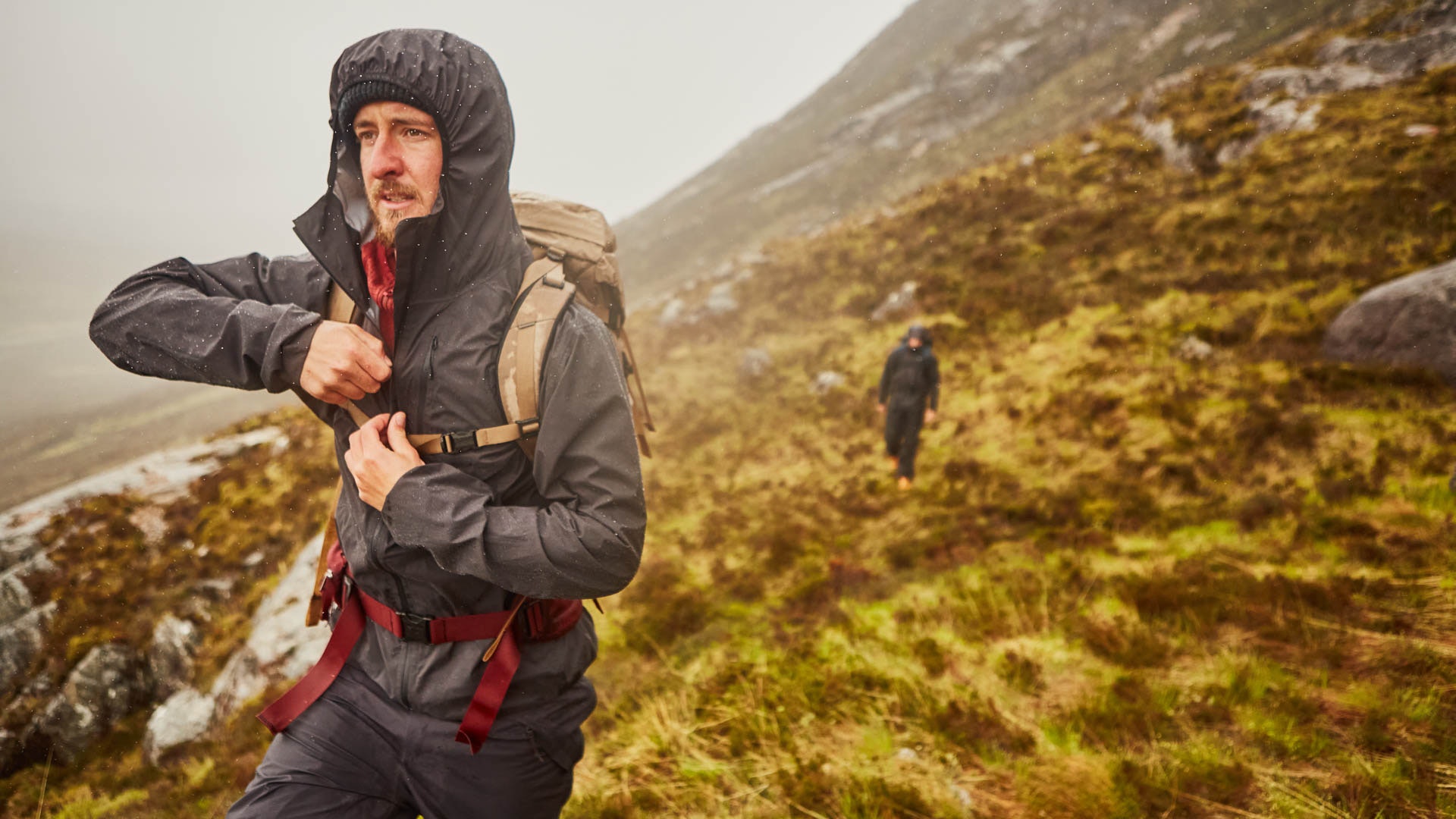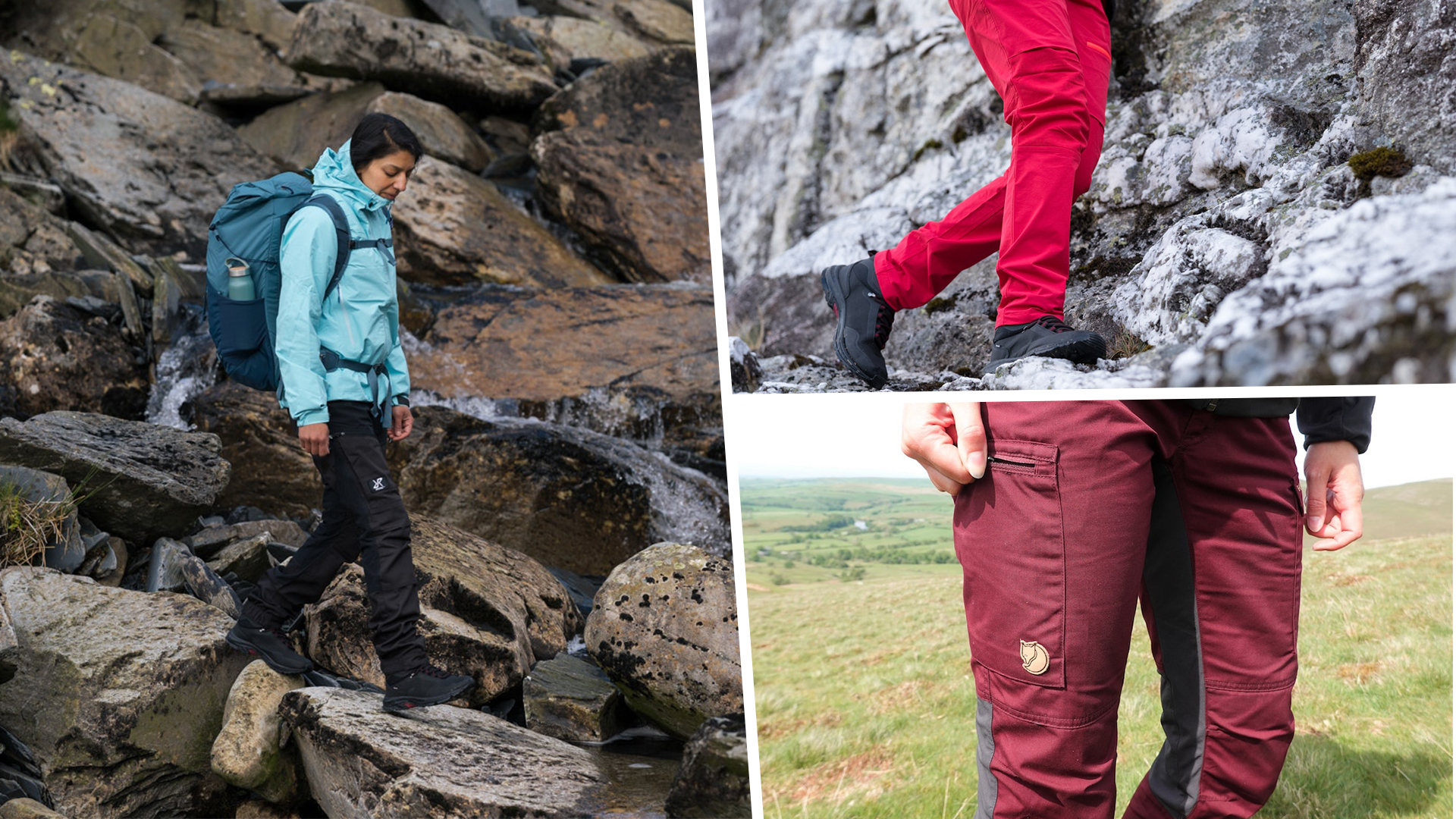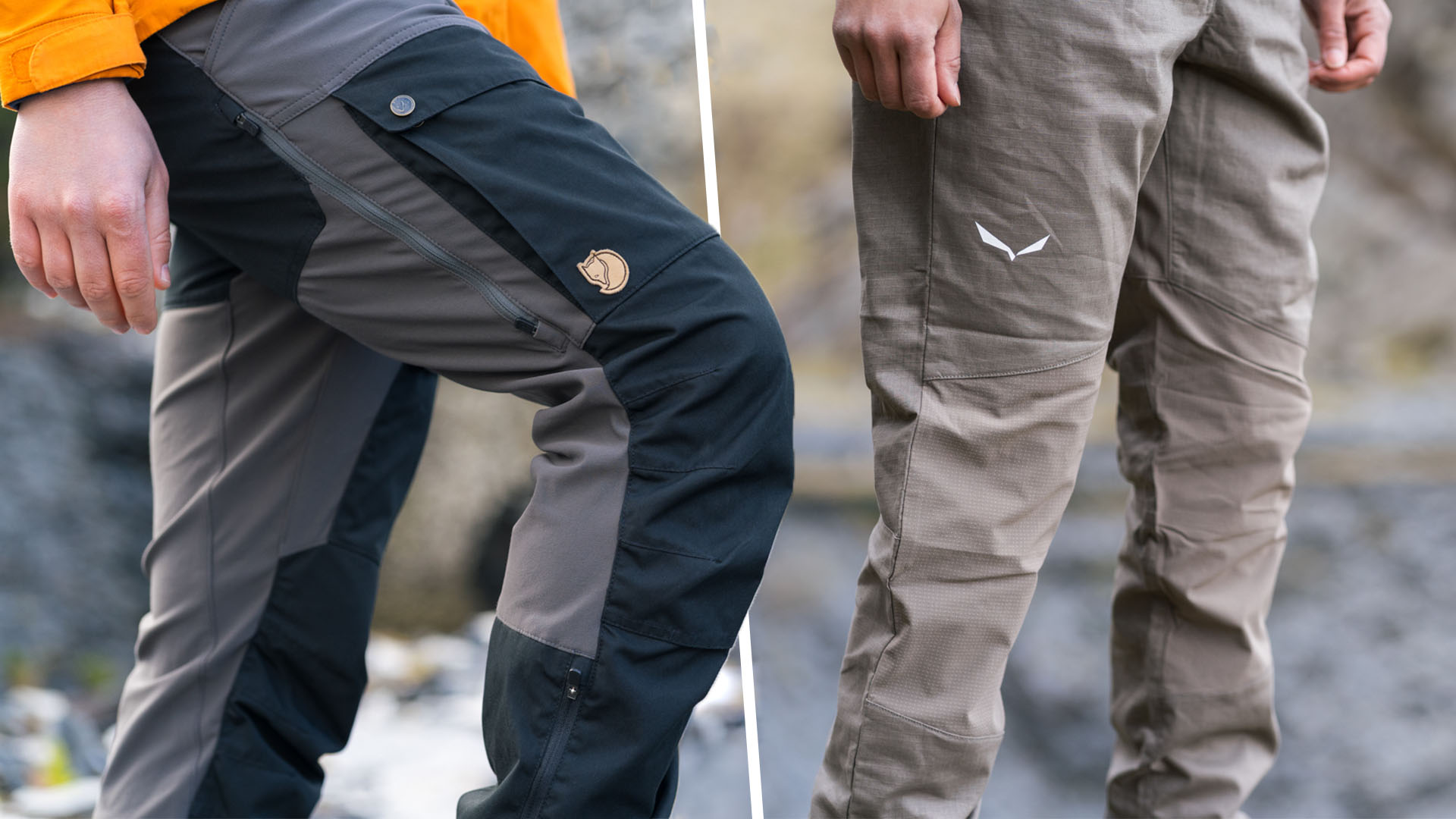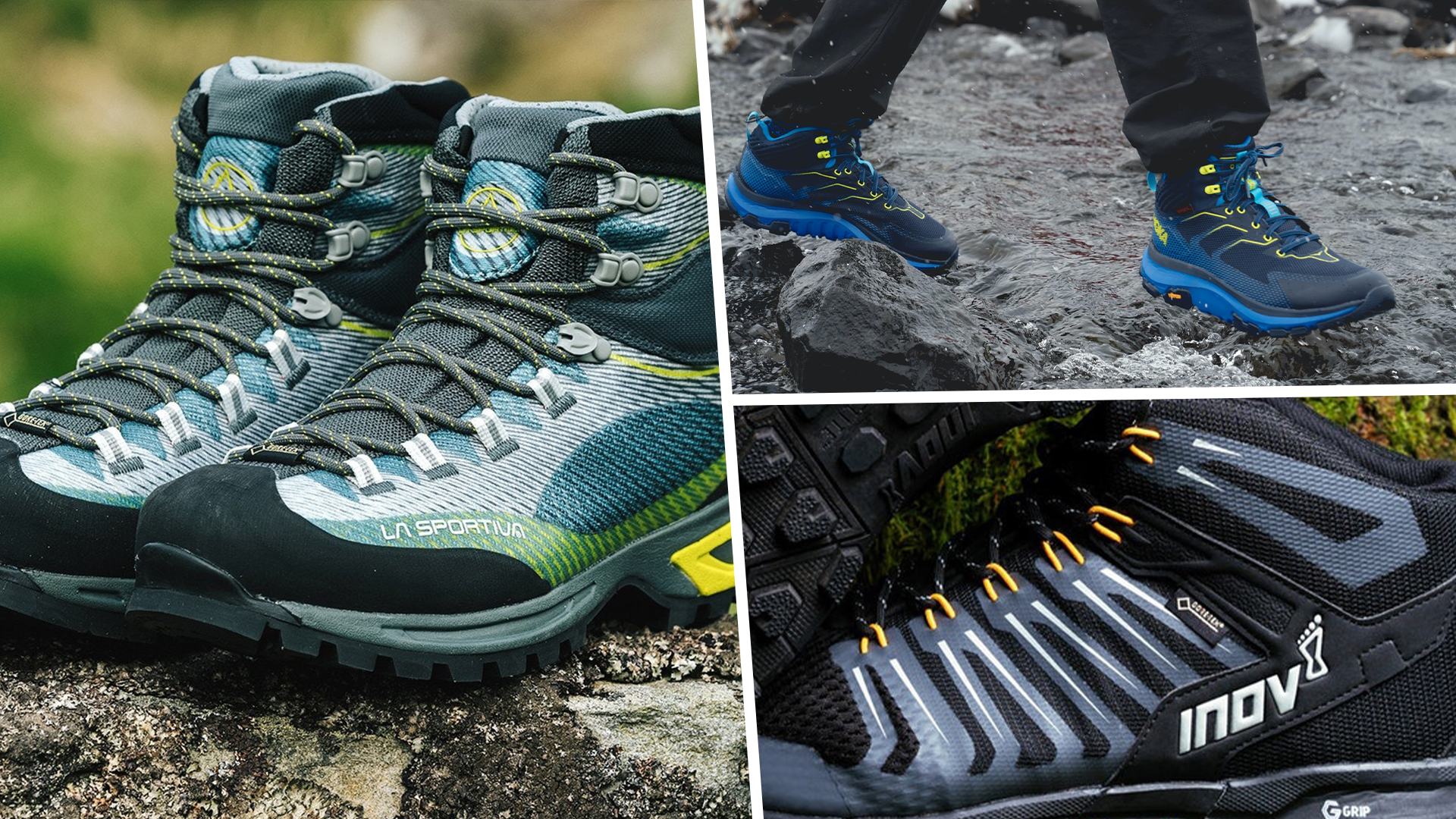In this round up, we’ve collected together what our team at Outdoors Magic deems to be the best sleeping bags of 2024. We’re looking at all kinds of options from ultralight sleeping bags, winter sleeping bags, double sleeping bags for couples and the best sleeping bags for kids too.
The sleeping bags we’ve selected here are a mix of down and synthetic filled options with varied temperature ratings too. We’ve marked out the fill mix alongside each one and have also listed the temperature rating too. Dive on down to the bottom of this article for all you need to know about temperature ratings and all the other important stuff when selecting a sleeping bag for your adventures.
Our Team’s Pick of the Best Sleeping Bags
Lightweight down bags for fast and light adventures, burly winterproof options for expeditions, good value options for family camping – here’s our pick of the best sleeping bags on the market right now.
- Best Overall Sleeping Bag: Therm-a-rest Questar 0F/-18C
- Best Value Down Sleeping Bag: Kelty Cosmic Down
- Best Double Sleeping Bag: Big Agnes Dream Island
- Best Value Synthetic Sleeping bag: Snugpak Softie
- Best Kid’s Sleeping Bag: Vango Kanto Jr
- Best Ultralight Sleeping Bag: Sea to Summit Spark Spark I 5C
- Best Winter Sleeping Bag: Rab Neutrino 600
How We Tested Them
All of these products were tested by our in-house testers and also our extended Test Team. We put them to the sword in UK mountain conditions through the seasons that each specific sleeping bag is designed for. For our tests, we ventured to the Scottish Highlands, the Lake District and the national parks of Wales on trips ranging from two day weekend camps through to multi-day long distance treks. Our testers are all below 6 foot 2 in height and all of the bags in the list were easily big enough for us. We’ve listed each bag’s length to give taller individuals an idea of their suitability.
Best Overall Sleeping Bag
Therm-a-rest Questar 0F/-18C
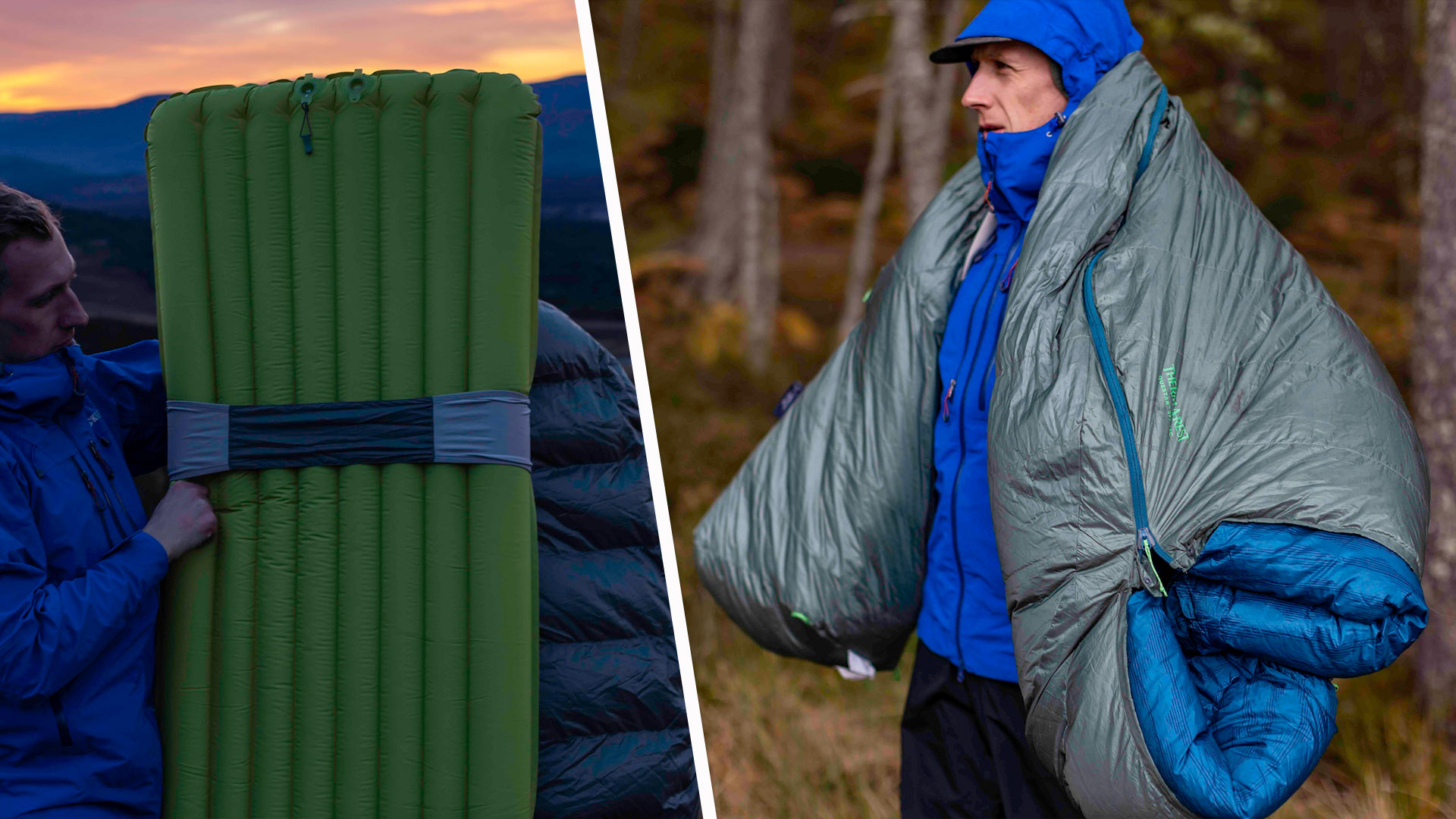
Price: £380
Weight: 1.21kg
Key attributes: good warmth-to-weight, neat design details, wide cut
Temperature rating: comfort rating: -10ºC comfort limit: -18ºC
Length: 185, 203 or 215cm
This is a lofty, cosy sleeping bag that can be used through all four seasons. On one occasion during our tests with this, we slept in it when temperatures were well below freezing and it did exactly what we wanted of it, giving a warm night’s sleep with plenty of space to move around too.
The warmth-to-weight ratio is good. Granted, there are lighter and warmer sleeping bags out there but they’ll come with big price tags. This sleeping bag, on the other hand, provides the best balance between warmth, a low weight and price. It also has some really useful details and clever innovations, including a fit that’s designed to cater for multiple sleeping positions, two straps that let you fasten this to a sleeping mat and a brilliantly-designed zipper that glides like a dream – it’s almost impossible to snag. Also, we’re big fans of Nikwax Hydrophobic Down here at Outdoors Magic and the good news is that it’s present here, so you can count on the fill staying nice and lofty even when there’s a bit of moisture about.
Selected for the Outdoor 100 23/24. Read our full Therm-a-rest Questar 0F/-18C review.
Buy the Therm-A-Rest Questar 0F/-18C Sleeping Bag: £318 at Amazon.co.uk
Best Value Down Sleeping Bag
Kelty Cosmic Down

Price: £130
Weight: 1.06kg
Key attributes: great value, useful details
Temperature rating: -6 (limit), 0C (comfort)
Length: 183cm
£130 is excellent value considering what this offers. It’s lofty, comfortable and it feels long lasting. The materials all have a good quality feel to them and it’s not too heavy or cumbersome either. On one trip that we used this on in Snowdonia at the tail end of summer (as shown in the picture above), this provided a very comfortable night’s sleep, offering warmth and a bit of wiggle room too. Still, it also packs down to a small size and it’s light to carry.
It comes in 0, 20 and 40° Fahrenheit ratings (-17, -6 and 4 degrees Celsius respectively). For us, the Cosmic 20 is the most versatile and the best suited to three-season camping.
It’s rated with an ISO Comfort of 32°F or 0°C and a lower limit of 21°F or -6°C, so most people will find it warm enough even if temps dip just below freezing. Unlike most low-cost rivals, its down fill is exclusively sourced from Allied Feather + Down – a reputable brand when it comes to down sourcing. You can count on it all being RDS (Responsible Down Standard) certified too.
Kelty have opted for a trapezoidal baffle construction here. Like box wall baffles, this results in greater thermal efficiency and fewer cold spots compared to the ‘stitched-through’ kind of baffles that are often found on low cost sleeping bags. Other useful details include: a ‘natural fit’ footbox, an anti-snag two-way zipper design and a draught-blocking baffle behind the main zipper.
Buy the Kelty Cosmic 20 Degree 550 Down Sleeping Bag: £145 at Amazon.co.uk
Best Value Synthetic Sleeping Bag
Snugpak Softie 6

Price: £150
Weight: 1.2kg
Key attributes: very cosy, good value, good wet weather performance
Temperature rating: -5C (limit), 0C (comfort)
Length: 190cm or 250cm
Another great value sleeping bag, the Snugpak Softie is filled with an impressive synthetic insulation that, to the touch, feels remarkably like down – and it’s super warm and cosy like down too. This kind of insulation will continue to insulate you even if it happens to get exposed to moisture. The same can’t be said for down filled bags unless they have a hydrophobic treatment. This makes the Softie great for bivvying, tarp sleeping or just for use in a condensation filled tent.
Snugpak have a bunch of sleeping bags in the Softie range but the Softie 6, is probably the best for multi-season versatility. It brings a comfort rating of 0°C / 32°F and a limit of -5°C / 23°F.
It has an elasticated drawcord hood, two-way anti-snag zip (useful for night time ventilation) and internal baffles to block out draughts. You can also sync this with another Snugpak sleeping bag to create a big shareable bag.
| BUY NOW: SNUGPAK.COM |
Best Double Sleeping Bag
Big Agnes Dream Island 20

Price: £270
Weight: 3.17kg
Key attributes: multi-purpose, great for car camping
Temperature rating: -6 (limit)
Length: 198cm
This is a double sleeping bag that has a bunch of really clever touches. First of all, you can fully remove the upper half of the bag to give you a blanket to drape over you at camp or you can even zip its sides together to turn it into a solo sleeping bag. The whole bag is also handily designed to fully integrate with one large sleeping mat or two solo sleeping mats.
The overall comfort rating is an impressive -7C / 20F, with the synthetic insulation giving this a very comfy and cosy feel. One touch we really liked is the inclusion of a divider that gives each sleeper a cinchable hood to lock in that extra bit of warmth. There are useful little hand-tuck pockets too.
At 3.43kg this is quite heavy so it’s best-suited to car camping. Still, it’s not totally unrealistic as an option to carry in a pack, especially if you’re dividing up your camp set up with your partner.
| BUY NOW: BIGAGNES.COM |
Best Kid’s Sleeping Bag
Vango Kanto Junior
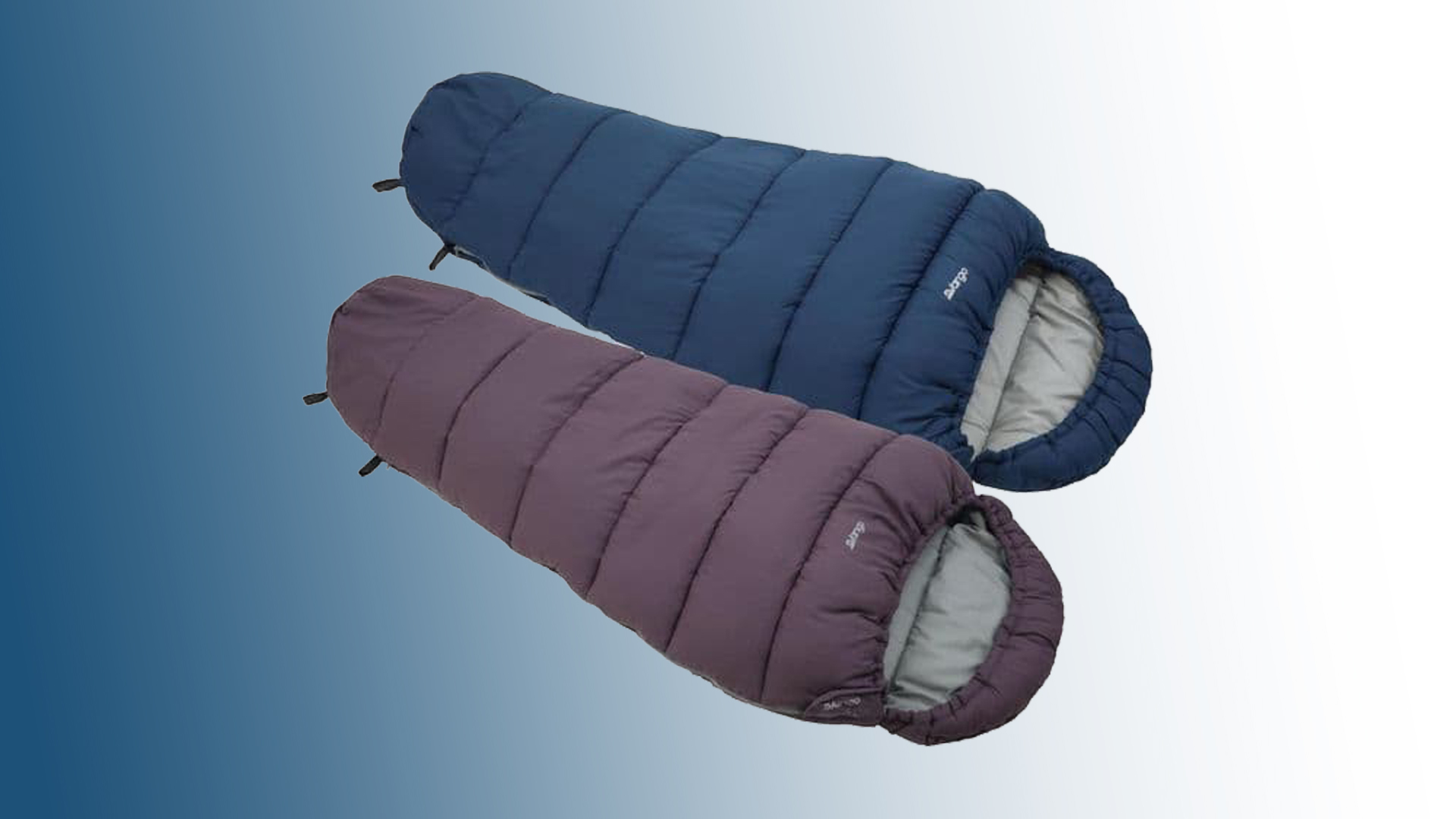
Price: £35
Weight: 1.1kg
Key attributes: great value, machine washable
Temperature rating: 8C (limit)
Length: 150cm
This children’s sleeping bag has all the details that an adult’s sleeping bag would have, but in miniature. So, expect a two-way zip that allows the occupant to open up the base of the bag for ventilation, an internal draught baffle, a cinchable hood and a stuff sack with compressible straps.
It’s filled with synthetic insulation and is rated for two seasons with its lower comfort limit of 8°C making it only suited to use from late spring through to early autumn. It’s also only suited to children that are shorter than 150cm.
All in all, it’s a great value sleeping bag that kids will love. It’s handy (for parents) that it’s machine washable too.
Buy the Vango Kanto Junior Sleeping Bag: £35 at Decathlon.co.uk
Best Ultralight Sleeping Bag
Sea to Summit Spark I 5C

Price: £295
Weight: 340g
Key attributes: very light, very packable
Temperature rating: 5C (limit)
Length: 183 or 198cm
While this comes in a range of temperatures, from 40°F to 5°F (5°C, -2°C, -8°C & -15°C), it’s the 40°F that’s impressed us the most here at Outdoors Magic. You won’t really find any high spec sleeping mats much lighter or packable on the market and as such it’s absolutely ideal for backpackers or bikepackers who care about every last gram they’re carrying. Just bear in mind that it’s only really going to be warm enough for summer use and you’d want to pair it with extra layers or a super warm sleeping mat if you want to carry it into the shoulder seasons.
To create such a low weight, Sea to Summit have used only a light down fill and have had to sacrifice a few details that you’d normally expect on a sleeping bag, so there are no draught baffles on the inside and the zipper is just a half-length one. They’ve also used a stitched-through baffle design instead of a warmer boxed wall design, again just to ensure that weight is brought down as low as possible.
All in all then, it’s minimalist and doesn’t offer plush warmth, but it’s super handy for anyone travelling fast and light. You could say it’s the ultimate ultralight sleeping bag for summer adventure racing or fastpacking.
Buy the Sea to Summit Spark I 5C Sleeping Bag: £225 at AlpineTrek.co.uk
Best Four-Season Sleeping Bag
Rab Neutrino 600

Price: £500
Weight: 998g
Key attributes: excellent warmth-to-weight ratio
Temperature rating: -12C (limit), -5C (comfort)
Length: 215cm or 230cm
Rab are right up there amongst the best of the best when it comes to sleeping bag design and this, we reckon, is one of their finest offerings. We’ve used this four-season sleeping bag for some nippy winter conditions here in the UK and it’s kept us perfectly toasty inside, but it’s still amazingly light and packable too.
It’s filled with 600g of 800 fill power down that’s cleverly stored in trapezoid boxwall baffles that are amazingly effective at eliminating cold spots. The down is all responsibly sourced and is treated with a PFC-free Nikwax hydrophobic treatment that allows the fill to stay lofty even when it’s exposed to moisture.
As for the shell fabric, that’s made from Pertex Quantum. It’s an impressive material that is super light but surprisingly durable too. 100% recycled materials were used for this – and for the liner fabric too.
The Neutrino has a ¾ length zip with anti-snag zip guards. There’s a zipped internal stash pocket for things like your mobile phone or head torch and handily, the stuff sack the sleeping bag comes with has a rolltop and is made from a fully waterproof fabric.
| BUY NOW: RAB.EQUIPMENT |
Rab Alpine 800
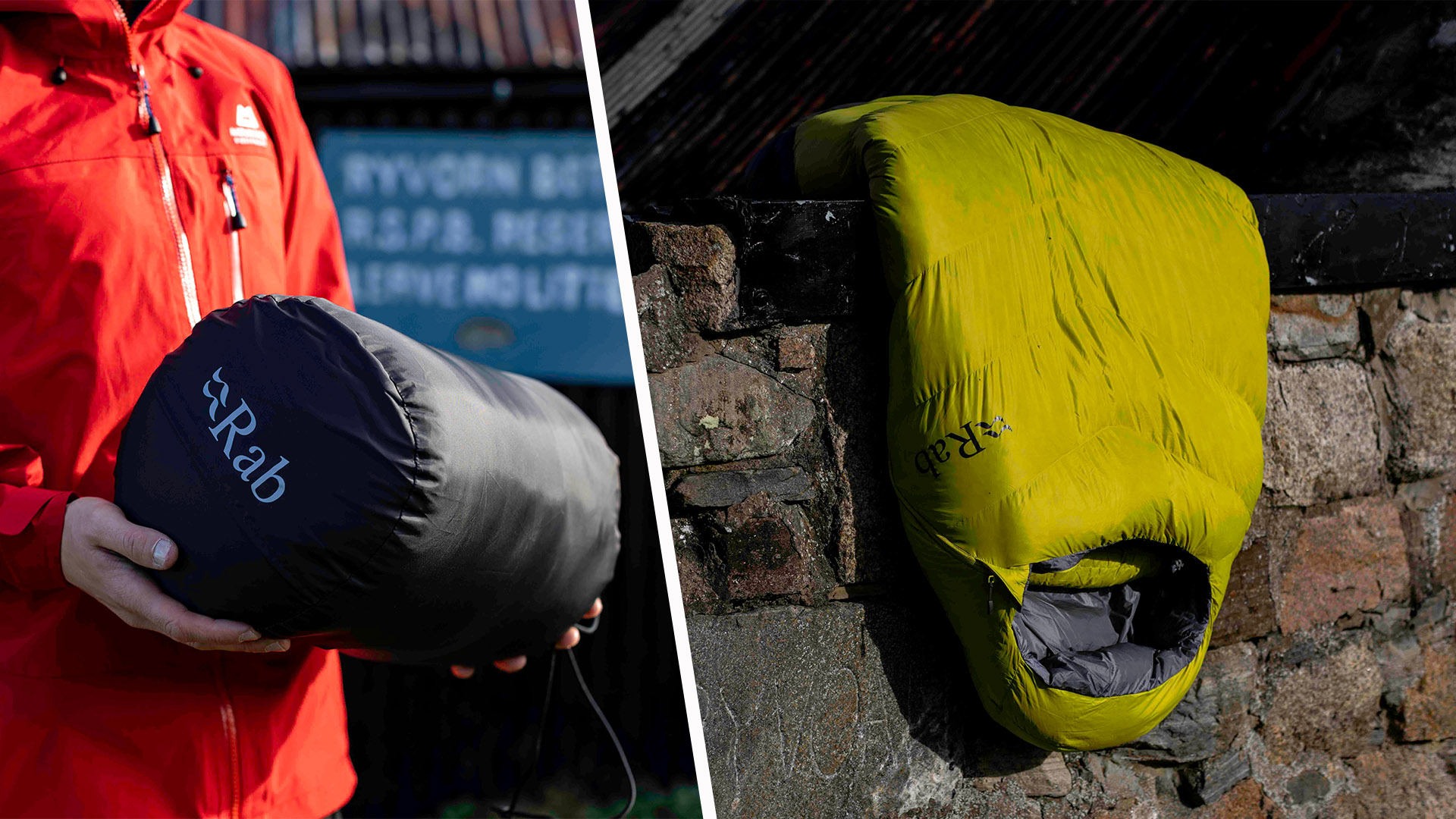
Price: £330
Weight: 1260g
Key attributes: Good warmth-to-weight, lofty fill
Temperature rating: -16C comfort limit
Length: 215cm or 230cm
If you like the look of the Rab Neutrino but don’t quite have the budget to afford it we recommend turning to the Rab Alpine 800 instead. It offers the same kind of warmth as the Neutrino but it’s just a little heavier. The main difference between the two bags is in the down quality, with the Neutrino boasting 800 fill power down and a less thermally efficient 650 fill power down used in the Alpine 800.
Still, in our tests with this sleeping bag, we were impressed by the loftiness of its fill and the cosy warmth inside it. We used it on a frosty trip in the Cairngorms and it was a reliably comfortable cocoon.
The two-way zip proved handy for regulating the temperature inside the bag and we liked the fact it had a little zipped pocket for a head torch too. The only downside is the fact that the stuff sack this comes with is a little basic, with no compression straps to let you really reduce the packed size.
Read our full Rab Alpine 800 review.
Buy the Rab Alpine 800 Down Sleeping Bag: £297 at Amazon.co.uk
Nemo Forte 20F

Price: £220
Weight: 1.55kg
Key attributes: good for side sleepers, eco-friendly materials
Temperature rating: -6C (limit), -1C (comfort)
Length: 168cm
This is a synthetic fill sleeping bag that is supremely comfy. It’s also quite innovative, because unlike most technical sleeping bags which tend to be mummy-shaped, the Forte flares at the elbows and knees to create more of a spoon shape. This allows side sleepers to shift positions comfortably throughout the night.
It comes in men’s and women’s fits, in both regular or long lengths, and two temperature ratings too. All the bags are stuffed with warm but durable recycled PrimaLoft synthetic fill that’s encased in a ripstop shell and a soft taffeta lining.
This specific model, the Forte 20 is rated with an ISO lower limit of 20°F or -6°C. We’ve found it to be warm even if temps dip just below freezing, so its a good bag for three-season camping. It’s a touch on the heavy side, but it’s still light for a synthetic sleeping bag, especially given how warm it is.
Buy the Nemo Forte 20F Sleeping Bag: £175 at AlpineTrek.co.uk
Selk’bag Pro Mountain Suit
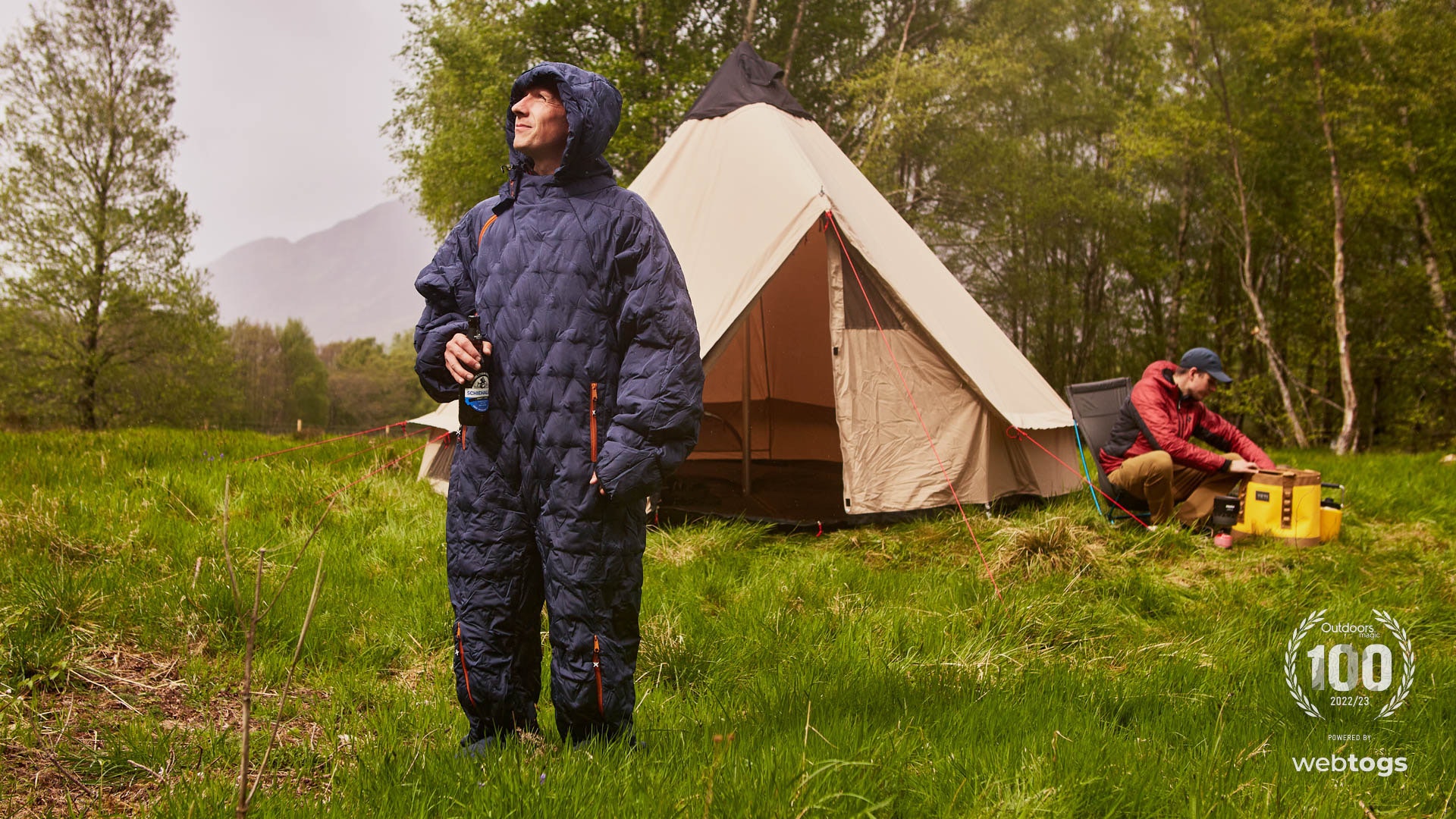
Price: £188
Weight: 1.8kg
Key attributes: fun, comfortable, durable
Temperature rating: 2C (limit), 6C (comfort)
Length: S-XL
Selk’bags are essentially wearable sleeping bags. They are a bit like onesies, but with more specialist insulation and cushioning for a life spent outdoors. With zipped ends at the feet and hand ends that can be opened or closed, you can go from sleeping cosily in this to being up and about camp, without having to take it off to face the cold chill of the morning.
100% post-consumer recycled materials are used for the outer shell and lining and a recycled PrimaLoft Black ThermoPlume forms the insulation. This gives the same kind of warmth as 550 fill power down. It does feel very warm to wear around camp and to sleep in, but it does also feel quite heavy to wear and to carry. It’s therefore not really something we’d want to take hiking, but it’s a fun and actually quite a practical option for things like camping holidays and festivals; where you want something to keep you warm while chatting around the campfire long into the evening.
Buy the Selk’bag Pro Mountain Suit Sleeping Bag: £283 at Amazon.co.uk
How to Choose a Sleeping Bag
Buying a sleeping bag can be a big investment, especially if you’re looking for something ultralight or for winter use, and it’s totally understandable to want to know exactly what you’re getting before you make a purchase.
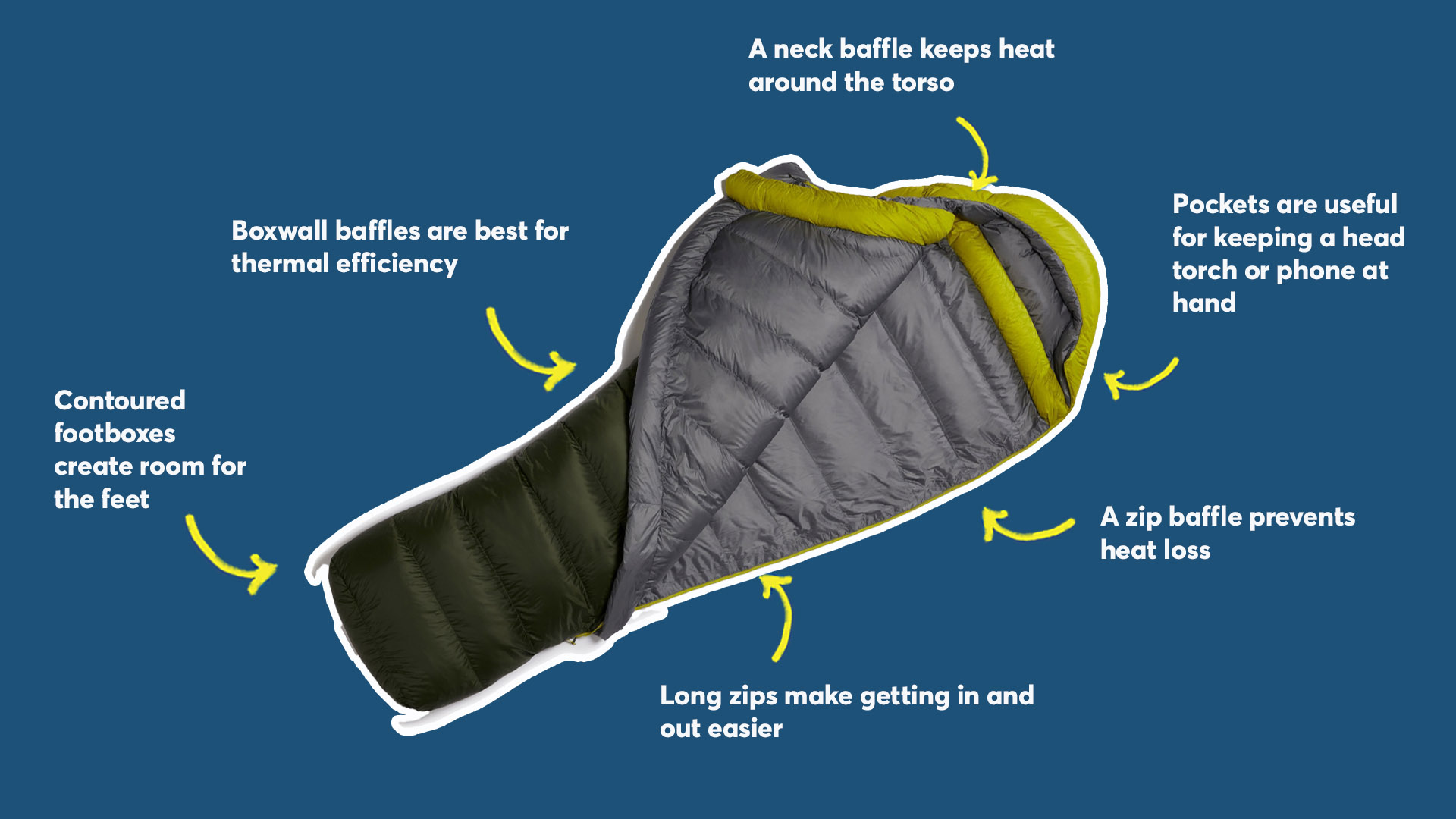
In this section, we’ll breakdown the exact things to look for when you’re browsing sleeping bags, including subjects like down-versus-synthetic, temperature ratings and details to look out for that will maximise thermal efficiency and comfort.
Understanding Sleeping Bag Temperature Ratings
A sleeping bag’s temperature rating is a measure that indicates the lowest temperature at which the bag can keep an average person comfortably warm. Temperature ratings help you choose a bag that matches the expected weather conditions, ensuring you are kept comfortable during your camping trip.
The sleeping bag industry has sought to establish a standardised system for sleeping bag ratings, though this is not adopted across the board. We have the EN (European Norm) rating and, more recently, the ISO (International Organization for Standardisation) rating. Referred to as ISO 23537 (formerly EN 13537), this criteria provides clear testing guidelines to assess a sleeping bag’s warmth, enabling consumers to make reliable product comparisons. These standards contain four key temperature ratings: upper limit, comfort, lower limit, and extreme, with the comfort and lower limit ratings being particularly important for most backpackers.
Comfort Rating
This is the standard temperature at which a typical person will feel comfortable sleeping in the bag without the risk of hypothermia. For most people, this rating represents the most accurate indication of the bag’s performance.
Lower Limit Rating
The lower limit rating is the lowest temperature at which a standard male can sleep comfortably. Women generally sleep colder than men (more on that below), so this rating may not be suitable for all individuals.
Extreme Rating
The extreme rating is the lowest temperature at which the bag can prevent frostbite or other cold-related injuries. It’s not a suitable guideline for regular camping.
Multiple factors influence a sleeping bag’s temperature rating, including the insulation type and the bag’s design. Fill power, a consideration mainly for down bags, determines their insulating ability; a higher fill power results in a warmer and lighter bag. Additionally, there are also user-specific factors, like a person’s metabolism, the clothing they’re wearing and the quality of the sleeping pad they’re using.
The Difference Between Standard and Women’s-Specific Sleeping Bags
Some sleeping bags come in versions that are specifically designed for women. That’s in order to address their specific physiological and comfort requirements in comparison to men.
Women’s-specific bags often feature different temperature ratings as women tend to sleep colder than men – that’s generally speaking, anyway. They are also typically shorter in length to efficiently reduce dead air space to heat, and their narrower shoulder and wider hip design aligns with the average female body shape for added comfort and reduced heat loss. Some women’s bags will include extra insulation in key areas like the footbox or torso.
Down Versus Synthetic Insulation
Down fill, derived from the plumage of ducks and geese, is highly regarded for its exceptional warmth-to-weight ratio. However, down has some drawbacks, notably its vulnerability when exposed to moisture, be that directly from rainfall or even just condensation within a tent. When wet, down loses its insulating properties it can take a long time to dry out.
On the other hand, synthetic fill, which is made of man-made fibre like polyester and nylon, offers excellent water resistance. It can also continue to insulate even when it does get wet and it will ultimately dry out quickly. These types of sleeping bags can also be cheaper than down ones too.
They have a downside though and that’s thay they can often be bulkier and heavier for the same level of warmth as down bags, and they may not compress as well either.

Generally speaking then, most backpackers will favour synthetic sleeping bags either when budget is an important factor or when they are likely to be sleeping in wet conditions and want something that can keep them warm throughout them.
It’s worth knowing that you can also find down sleeping bags that come with hydrophobic treatments (like Nikwax) that make them capable of withstanding a lot of moisture. These bags can therefore be just as good as synthetic bags when it comes to wet weather use, with the added benefits of having a better warmth-to-weight ratio. They’ll still often be more expensive though.
The choice between down and synthetic fill ultimately depends on your priorities. If weight, compressibility, and maximum warmth are crucial then down, by and large, may be your preference, but if versatility, affordability, and moisture resistance are priorities, synthetic fill is a solid choice.
Sleeping Bag Constructions
It’s worth noting the baffle construction that a brand has deployed when you’re choosing a sleeping bag. Here at Outdoors Magic we’d say that sleeping bags with a box wall or trapezoidal baffle construction will have high thermal efficiency. The other common construction, where the seams are sewn through (or stitched through) will be cheaper to make and will thus have a smaller mark up, but they’re by and large less thermally efficient as they have more spaces for heat to escape.
There are other constructions out there too. Continuous baffles allow insulation adjustment, while vertical baffles provide even warmth throughout the bag. Then there are V-shaped baffles which are lightweight and ideal for cold-weather, but less commonly found and often quite expensive.

